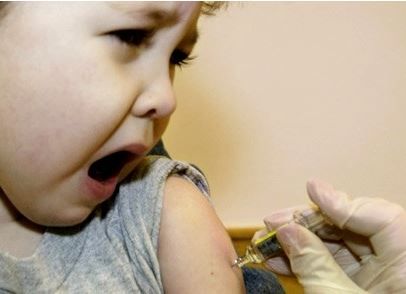- Clinical Technology
- Adult Immunization
- Hepatology
- Pediatric Immunization
- Screening
- Psychiatry
- Allergy
- Women's Health
- Cardiology
- Pediatrics
- Dermatology
- Endocrinology
- Pain Management
- Gastroenterology
- Infectious Disease
- Obesity Medicine
- Rheumatology
- Nephrology
- Neurology
- Pulmonology
Who Would You Vaccinate Here?
Two small children, two opportunities to administer the live MMR vaccine. Who gets the shot and who does not?
Give MMR to a child aged 6 to 12 months if traveling to a high-risk area.

Two broad reasons preclude the use of the live MMR vaccines. One is that the live vaccine may prove a risk to the individual receiving the vaccine. My previous column dealt with this issue. The second broad reason why a child should not receive a live vaccine is that the vaccine may not provide protection against the target disease.
In which of the 2 following scenarios should you just say “No” to vaccination against measles?
Scenario 1. A 12-month-old child comes to your office for her well-child visit. She was treated for Kawaski disease at 7 months of age with IVIG, but otherwise has been healthy.
Should she be given her MMR shot at this visit?
A. Yes
B. No
Scenario 2. The mother of a 6-month-old girl will be traveling to Berlin in 2 weeks to visit her German parents. The child has received the usual CDC recommended vaccines for age, including a live rotavirus vaccine 2 weeks ago. The mom mentions that she heard that an 18-month-old child died in Berlin in February after being infected with the measles. When you Google the topic you do see that 500 cases have been reported in Berlin this year.
What do you tell mom?A. Your child should receive the MMR vaccine today, since it may take 2 weeks to develop full immunity.
B. Your child is too young to receive the MMR vaccine, but she can receive a shot of IgG that will protect her.
C. Your child is not too young to receive the MMR, but you can’t do it today, since one needs to have a 28-day interval between two live vaccines if not given on the same day. Getting the vaccine in 2 weeks along with a dose of IgG is recommended.
D. Your child does not need an MMR or IgG shot, since enough maternal antibody should still be around to protect the infant.
Please leave your thoughts below
Click here for answers and discussions
Answers and Discussions
Scenario1. The correct answer is B. No. For the immune system to mount a protective response to an attenuated live virus, the virus has to multiply in the body. The reason why children under the age of 12 months are not routinely immunized is out of concern that residual maternal anti-measles IgG may interfere with replication of the virus and an adequate immune response. Blood transfusions and immunoglobulin administration, whether IV or IM, may interfere with the production of a life-long immune response to the MMR vaccine. The Red Book from the American Academy of Pediatrics (AAP) and the CDC on its Web site list the minimum intervals between the receipt of a blood product and when one can administer the measles vaccine with assurance of a good immune response. For example, the minimum interval between the administration of packed red blood cells and subsequent measles vaccination is 6 months. For the dose of IVIG usually given to treat Kawaski disease, the interval is 11 months. So, the child in scenario A should NOT receive her MMR until age 18 months, 11 months after the IVIG administration.
Scenario 2. The correct answer is A. Yes. The Redbook from the AAP states that children between 6 and 12 months of age should receive the MMR vaccine if traveling to a high-risk area. As noted above, the vaccine may not work because of residual maternal antibody, but then again it may, and given the threat posed by a high-risk situation, the vaccine should be given. It will not count toward one of the two MMRs the child will need after age 12 months. The Advisory Committee on Immunization Practices does recommend that there be a 28-day interval between the administration of another live vaccine (eg, varicella, FluMist) and MMR with the exception of rotavirus and typhoid, the two orally administered live vaccines that can be given any time before or after an MMR.
References:
Pickering LK, Baker CJ, Kimberlin DW, Long SS, eds. Red Book: 2012 Report of the Committee on Infectious Diseases. 29th ed. Elk Grove Village, IL: American Academy of Pediatrics; 2012.
